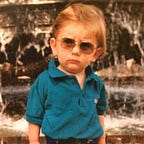The fear of digital reproduction
We live in an age of google images, social networks that fuel the uncontrolled distribution of content, art, images and made every digital information into a free social good.
The fear of “content” reproduction has been raised by people like Walter Benjamin (German-Jewish cultural critic) since the early days of photography and warned about the threats of “mechanical” reproduction of art. He claims that: “The aura is found in a work of art that contains presence. The aura is precisely what cannot be reproduced in a work of art: its original presence in time and space.” He suggests: “a work of art’s aura is in a state of decay because it is becoming more and more difficult to apprehend the time and space in which a piece of art is created.”
After 80 years of this publishing, the internet has exactly diminished the “aura” of the art and lost its “presence in time and space.” There is no bridge between the actual piece, creator, and the viewer. Any image result pulled during the google search shows outcomes from sources that are better indexed than the museums or artists owning the piece.
Especially museums have struggled in finding the place in such an environment, and containment of art has played out even worse because that detachment from social media and “sharing” culture have repelled the visitors more.
So open access is an irreversible action in the contours of the society we live in. Still, we are missing the fundamental economic layer over the internet to align the redistribution of incentives correctly—the emergence of Blockchains as the first “economic platform” in the history of computing, is giving a glimpse into the creative economy's future.
The technology of “non-fungible tokens” and cryptographic ownership of digital records offers “presence in time and space” for digital art on the internet. It’s an open-public ability to identify the source and gives it a unique single form for value accumulation. It’s a turning point for everything we know on the internet, which will unleash the unprecedented value currently frozen due to dissemination.
The future of art is in a “digital aura.” created by the technology that allows the buildup of layers and layers of transparent and traceable interactions between the actual piece, creator, and the viewers. That means that Google and social networks of the future will have to adopt the technical, legal, and economic means of content distribution. YOU, the content creator or owner, will be rewarded for every single use of your digital piece.
The fear of reproduction will be replaced by the ultimate value creation by ownership and sharing capabilities, that will boost the creativity never seen before on an individual level.
Yes, free jpeg files of art will be available for downloads, but they will be completely detached from the legal platforms and means of communication. We’ll be all part of a creative economic machine that runs in the back — but still feels like old-time feed scrolling.
